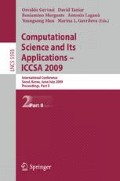Abstract
Requirement analysis plays a very important role in reliability, cost, and safety of a software system. The use case approach remains the dominant approach during requirement elicitation in industry. Unfortunately, the use case approach suffers from several shortcomings, such as lacking accuracy and being difficult to analyze and validate the dynamic behavior of use cases for concurrency, consistency, etc. This paper proposes an approach for overcoming limitations of the use case approach and applies the approach in Model Driven Development (MDD). Timed and Controlled Petri Nets are used as the formal description and verification mechanism for the acquired requirements. Use cases are used to elicit the requirements and to construct scenarios. After specifying the scenarios, each of them can be transformed into its correspondent Petri-net model. Through analyzing these Petri-net models, some flaws or errors of requirements can be detected. The proposed approach is demonstrated by an E-mail client system.
This research is supported by the NSFC Grant No. 60433010, NSFC Grant No. 60873018 jointly sponsored by Microsoft Asia Research Academy, Defence Pre-Research Project of China No. 51315050105, SRFDP Grant 200807010012 and SKLSE20080713.
Access this chapter
Tax calculation will be finalised at checkout
Purchases are for personal use only
Preview
Unable to display preview. Download preview PDF.
References
Bastani, B.: A Requirements Analysis Framework for Open Systems Requirements Engineering. ACM SIGSOFT Software Engineering Notes 32, 1–19 (2007)
Lee, W.J., Cha, S.D., Kwon, Y.R.: Integration and Analysis of Use Cases Using Modular Petri Nets in Requirements Engineering. IEEE Transactions on Software Engineering 24(12), 1115–1130 (1998)
Shen, W., Liu, S.: Formalization, Testing and Execution of a Use Case Diagram. In: Dong, J.S., Woodcock, J. (eds.) ICFEM 2003. LNCS, vol. 2885, pp. 68–85. Springer, Heidelberg (2003)
Hsia, P., Samuel, J., Gao, J., Kung, D., Toyoshima, Y., Chen, C.: Formal Approach to Scenario Analysis. IEEE Software, 33–41 (March 1994)
Andersson, M., Bergstrand, J.: Formalizing Use Cases with Message Sequence Charts. Master’s thesis. Lund Inst. of Technology (1995)
Shen, W., Guizani, M., Yang, Z., Compton, K., Huggins, J.: Execution of A Requirement Model in Software Development. In: Proceeding of IASSE 2004, Nice, France, pp. 203–208 (2004)
Li, X., Liu, Z., He, J.: Formal and Use-Case Driven Requirement Analysis in UML. In: 25th Annual International Computer Software and Applications Conference, 2001. COMPSAC 2001, Chicago, IL, USA, pp. 215–224 (2001)
OMG. Model Driven Architecture (MDA)- document number ormsc/2001-07-01 (2001)
Postel, J.B.: RFC 821: Simple Mail Transfer Protocol (1982)
Toyama, T., Ohnishi, A.: Rule-based Verification of Scenarios with Pre-conditions and Post-conditions. In: Proceedings of the 13th IEEE International Conference on Requirements Engineering 2005, Paris, pp. 319–328 (2005)
Ohnishi, A., Hui, Z.H., Fujimoto, H.: Transformation and Integration Method of Scenarios. In: Proceedings of 26th IEEE International Computer Software and Applications Conference (COMPSAC 2002), Oxford, England, August 26-29, pp. 224–229 (2002)
Li, L.: A Semi-Automatic Approach to Translating Use Cases to Sequence Diagrams. In: TOOLS 1999: 29th International Conference on Technology of Object-Oriented Languages and Systems, pp. 184–193. IEEE Computer Society, Nancy (1999)
Murata, T.: Petri nets: Properties, analysis, and applications. Proceeding of the IEEE 77(4), 541–580 (1999)
Krogh, B.H.: Controlled Petri Nets and Maximally Permissive Feedback Logic. In: Proceeding of the 25th Annual Allerton Conference, pp. 317–326 (1987)
Ichikawa, A., Hiraishi, K.: Analysis and Control of Discrete Event Systems represented by Petri Nets. In: Discrete Event Systems: Models and Applications. LNCS, vol. 103, pp. 115–134. Springer, New York (1988)
PIPE2, Platform Independent Petri net Editor 2, http://pipe2.sourceforge.net
Lanubile, F., Shull, F., Basili, V.R.: Experimenting with Error Abstraction in Requirements Documents. In: Proceeding of the 5th international symposium on software metrics, pp. 114–121 (1998)
Campos, J., Merseguer, J.: On the Integration of UML and Petri Nets in Software Development. In: Donatelli, S., Thiagarajan, P.S. (eds.) ICATPN 2006. LNCS, vol. 4024, pp. 19–36. Springer, Heidelberg (2006)
Boccalatte, A., Giglio, D., Paolucci, M.: A CASE Tool for Information System Project and Development. In: Proceedings of IEEE International Conference on Systems, Man, and Cybernetics, Tokyo, Japan, vol. 3, pp. 1042–1047 (1999)
Lee, J., Pan, J.-I., Kuo, J.-Y., Fanjiang, Y.-Y., Yang, S.: Towards the Verification of Scenarios with Time Petri-Nets. In: Proceeding of the 24th Annual International Conference on Computer Software and Application, Taipei, Taiwan, pp. 503–508 (2000)
Author information
Authors and Affiliations
Editor information
Editors and Affiliations
Rights and permissions
Copyright information
© 2009 Springer-Verlag Berlin Heidelberg
About this paper
Cite this paper
Zhao, J., Duan, Z. (2009). Verification of Use Case with Petri Nets in Requirement Analysis. In: Gervasi, O., Taniar, D., Murgante, B., Laganà, A., Mun, Y., Gavrilova, M.L. (eds) Computational Science and Its Applications – ICCSA 2009. ICCSA 2009. Lecture Notes in Computer Science, vol 5593. Springer, Berlin, Heidelberg. https://doi.org/10.1007/978-3-642-02457-3_3
Download citation
DOI: https://doi.org/10.1007/978-3-642-02457-3_3
Publisher Name: Springer, Berlin, Heidelberg
Print ISBN: 978-3-642-02456-6
Online ISBN: 978-3-642-02457-3
eBook Packages: Computer ScienceComputer Science (R0)

